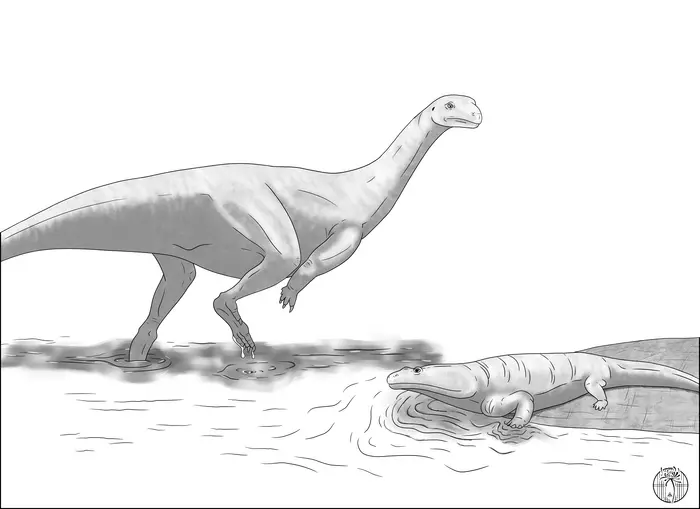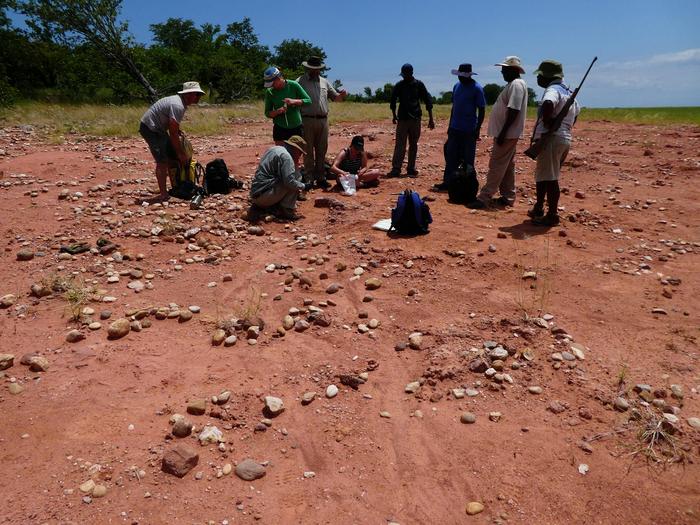
A new dinosaur from Zimbabwe
Scientists said on May 30, 2024, they’ve discovered a new dinosaur species from fossils found near Lake Kariba in Zimbabwe, Africa. The new species – Musankwa sanyatiensis – is the 4th dinosaur species discovery in the country. It was a plant-eater that lived around 210 million years ago.
The dinosaur’s genus name, “Musankwa,” was the name of the houseboat scientists used during their expeditions to the research site. Moreover, in the Tonga dialect, it means “boy close to marriage.” In addition, its species name “sanyatiensis” alludes to the Sanyati River that flows into Lake Kariba.
The researchers published their peer-reviewed findings in the journal Acta Palaeontologica Polonica on May 30, 2024.
Identifying a new species from leg bones
In 2018, scientists found the fossils embedded in sandy siltstone on the shoreline of Lake Kariba in Zimbabwe. The rocks that held those fossils dated to the late Triassic period, about 210 million years ago.
They recovered a hind leg that included thigh, shin and ankle bones. Those bones alone were enough to identify it as a sauropodomorpha. These Triassic sauropodomorpha were plant-eaters with long necks that walked on their hind legs.

This new species likely weighed about 850 lbs (386 kg), about the size of a medium-sized horse. Also, scientists think it was one of the larger dinosaurs of that era. It was closely related to other late Triassic sauropodomorpha found in South Africa and Argentina.
Moreover, its fossilized hind leg had features researchers had not seen in other sauropodomorpha. As a result, scientists were able to identify it as a new species. Co-author Kimberley Chapelle of Stony Brook University said:
Despite the limited fossil material, these bones possess unique features that distinguish them from those of other dinosaurs living at the same time.
Dinosaurs in Africa
The first dinosaur discovery from the continent of Africa was in South Africa in 1845. Since then, there have been dino discoveries in about 10 countries, including South Africa, Tanzania, Niger, Zimbabwe and Morocco. For instance, the fossilized bones of Ledumahadi mafube, which lived 200 million years ago, came from South Africa.
But compared to other parts of the world, there have not been many dinosaur discoveries in Africa. Lead author Paul Barrett of the Natural History Museum in London commented:
The main reason for the underrepresentation of African dinosaur fossils is ‘undersampling.’ Put simply, there have been fewer people looking for and unearthing dinosaurs in comparison with other regions of the world.
However, finding this new species gives scientists hope that more discoveries await them. Barrett said:
Over the last six years, many new fossil sites have been recorded in Zimbabwe, yielding a diverse array of prehistoric animals, including the first sub-Saharan mainland African phytosaurs (ancient crocodile-like reptiles), metoposaurid amphibians (giant armored amphibians), lungfish and other reptile remains.
Chapelle added:
Based on where it sits on the dinosaur family tree, Musanwka sanyantiensis is the first dinosaur of its kind from Zimbabwe. It, therefore, highlights the potential of the region for further paleontological discoveries.

Bottom line: Scientists have unearthed a new dinosaur species near Lake Kariba in Zimbabwe. It was a plant-eater that lived around 210 million years ago.
Source: A new Late Triassic sauropodomorph dinosaur from the Mid-Zambezi Basin, Zimbabwe











